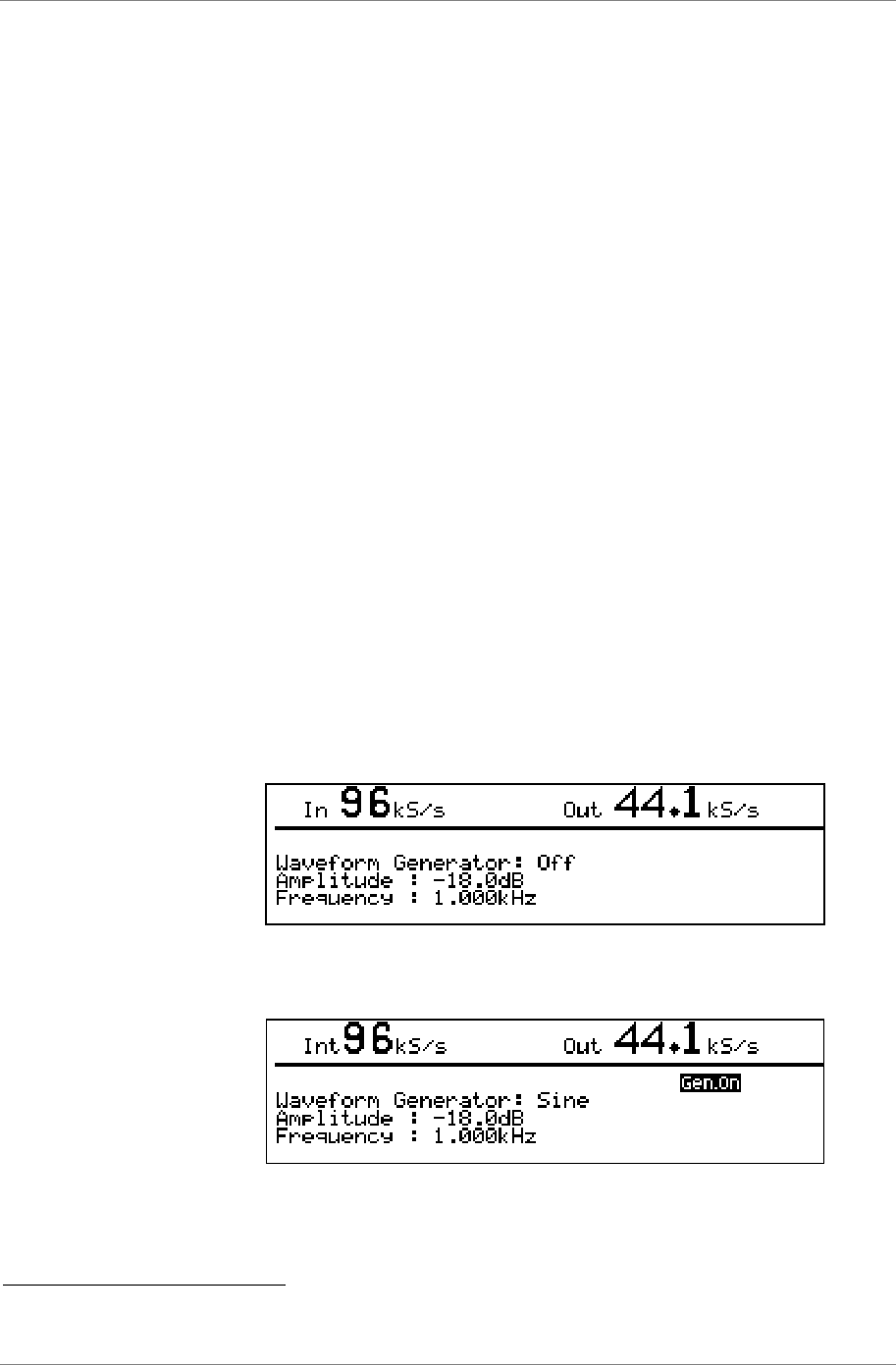
dCS 974 User Manual Manual for Software Version 1.0x
dCS Ltd May 2001
Manual part no: DOC1241121A1
Page 53
Document No: OS-MA-A0124-112.1A1
Contact
dCS
on + 44 1799 531 999 email to: more@dcsltd.co.uk
(inside the UK replace + 44 with 0) web site: www.dcsltd.co.uk
Test Submenu
Generator Overview
The dCS 974 includes a high quality digital signal test generator, with both sine
or square wave outputs, and displays its settings on the Test Mode screen.
When invoked, the generator adjusts its output format to that currently
operating, and substitutes the generated output for any input signal. The
generator operates at the output sample rate. In PCM modes, it is a PCM
generator (in the appropriate mode), in DSD mode it is a DSD generator
10
.
If the unit is sync’d to an input when it goes into Generator mode, then the
generator stays sync’d to that input (so the output will be synchronous and
locked).
IMPORTANT!
If the unit is not sync’d to anything, set the Sync Source to Internal.
Otherwise, the equipment you are trying to drive may be unable to lock to the
Generator outputs because the sample rate has drifted out of lock range.
The Sample Rate Conversion menu is still active in Generator mode, so it can
enter Generator mode with no external syncing, the Generator can be set up, a
sync input can be selected from the Sample Rate Conversion menu and the
unit will sync to that. Noise shaping and other features available in the Sample
Rate Conversion menu can still be used, as long as these operate at the
output rate. Filters, for example, do not affect the generator output, because
they operate on the input signal. Dither operates at the output rate, so it can be
used.
Controlling the Generator
To view the Test Mode screen, go to the top level menu, select Test and press
Status to get the display below (assumes 96kS/s sync source):
If the unit is set to Internal sync, the screen will show Int beside the input
sample rate as follows:
10
in DSD mode it is a PCM generator, operating at a sample rate of 705.6 kS/s, and then converted to DSD.
This means that the maximum frequency that it can produce is 352.8 kHz.


















